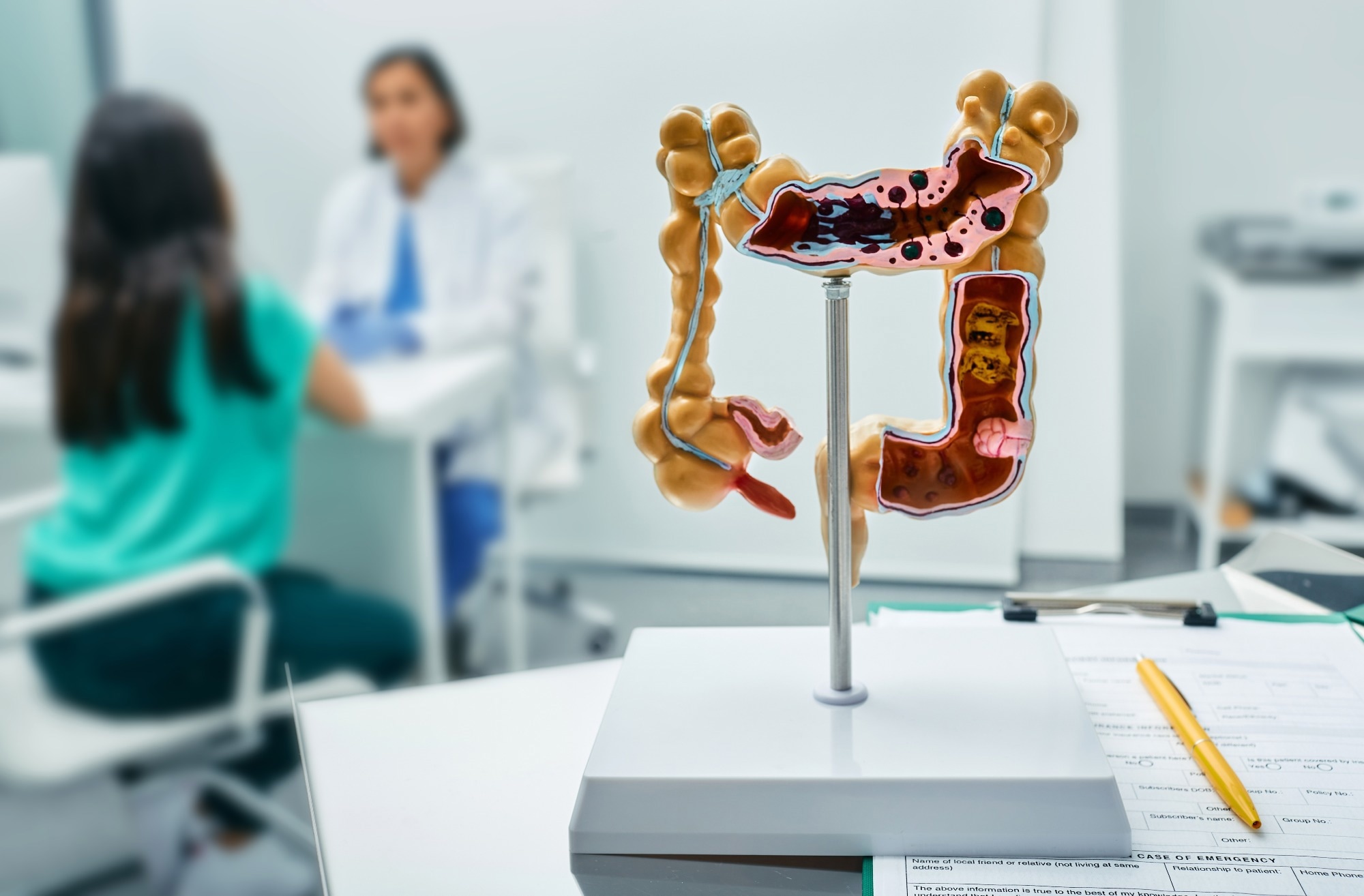In a recent study published in Science Advances, researchers elucidate the association between adiposity subtypes and the risk of colorectal cancer.
 Study: Tissue-specific genetic variation suggests distinct molecular pathways between body shape phenotypes and colorectal cancer. Image Credit: Peakstock / Shutterstock.com
Study: Tissue-specific genetic variation suggests distinct molecular pathways between body shape phenotypes and colorectal cancer. Image Credit: Peakstock / Shutterstock.com
Risk factors for colorectal cancer
Colorectal cancer is among the three most prevalent forms of cancer in the world and is associated with the second-highest cancer-related mortality rate.
Previous studies have reported that obesity or being overweight, with a body mass index (BMI) exceeding 25 kg/m2, is a risk factor for colorectal cancer. Other anthropometric markers, such as waist-to-hip ratio and circumference of the hip or waist, have shown similar associations with colorectal cancer risk.
However, these factors do not provide any additional insights into the etiology or differential risk of colorectal cancer. Whether the risk of colorectal cancer differs according to various subtypes of adiposity remains unclear.
About the study
In the present study, researchers conducted a principal component analysis on anthropometric measurements such as BMI, weight, height, hip and waist circumferences, and waist-to-hip ratio to define body shape phenotypes that reflected different adiposity subtypes.
These phenotypes were then used to assess the risk of colorectal cancer based on sex and subsites such as the rectum, colon, and proximal or distal colons. The potential mechanisms through which these traits affected the risk of colorectal cancer were also determined by investigating tissue-specific expression of trait-associated genes.
A prospective observational study was conducted among participants registered in the United Kingdom Biobank, which included about 4,000 incident cases of colorectal cancer. A genome-wide association study (GWAS) of the participants from the U.K. Biobank and an enrichment analysis of tissue expression to identify the factors that functionally contribute to body shape were also performed.
Mendelian randomization analysis was also conducted on a dataset from large colorectal cancer genetic consortia to obtain evidence of causality for the association between body shape phenotypes and colorectal cancer risk. The genetic consortia included in this analysis had no overlaps with U.K. Biobank participants.
Several confounding variables were considered during the analyses, including sex, age, education levels, the Townsend deprivation index, the center of recruitment, ethnicity, lifestyle factors such as tobacco smoking, physical activity levels, adherence to healthy diets, alcohol intake, and frequency, use of medications, including hormone therapy for women, and a history of colorectal cancer in the family. However, the researchers did not adjust for type 2 diabetes, as they believed the presence of this disease would mediate the adiposity subtype and not confound it.
Hazard ratios were calculated for each principal component, with models stratified by sex, age, and recruitment center and adjusted for the different confounding factors. To circumvent the potential confounding role of smoking, a sensitivity analysis was also conducted by excluding previous and current smokers.
Study findings
Four body shape phenotypes that reflected adiposity subtypes, including generally obese, tall with low waist-to-hip ratio, tall with central obesity, and athletic, were identified. Of these subtypes, the generally obese and tall with central obesity phenotypes had the highest associations with colorectal cancer risk.
The Mendelian randomization analysis confirmed the positive associations between these two phenotypes and increased risk of colorectal cancer. These associations were also consistent across the four subsites of colorectal cancer investigated and for both males and females.
GWAS for tissue-specific expression of trait-associated genes indicated that, for the generally obese phenotype, tissue-specific gene expression patterns were associated with a higher proportion of brain tissue or neural cells. In the tall with central obesity phenotype, gene expression patterns indicated a higher proportion of mesenchymal cells. These findings suggest that the molecular pathways contributing to the increased risk of colorectal cancer might be distinct for various adiposity subtypes.
Conclusions
The risk of colorectal cancer differs based on various adiposity subtypes. Moreover, the two phenotypes associated with the highest risk of colorectal cancer were generally obese and tall with central obesity phenotypes. The study findings also indicate that the causal pathways that contribute to the risk of colorectal cancer might differ for the various adiposity subtypes.
Journal reference:
- Peruchet-Noray, L., Sedlmeier, A. M., Dimou, N., et al. (2024). Tissue-specific genetic variation suggests distinct molecular pathways between body shape phenotypes and colorectal cancer. Science Advances 10(16). doi:10.1126/sciadv.adj1987